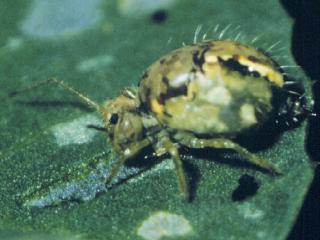Lucerne flea
- New Norcia
- Cadoux
- Tammin
- Cunderdin
An Agworld user has reported finding lucerne flea in a 4 leaf canola crop near New Norcia.
David Stead (Anasazi Agronomy) reports that lucerne flea are being found throughout Cadoux and north of Tammin and Cunderdin largely in lupins and some early cereal crops.
With many crops still germinating or very young, growers are reminded to inspect crops for lucerne flea.
The lucerne flea is a Collembolan or 'springtail'. Adult lucerne flea are approximately 3mm in size and green-yellow in colour.
Lucerne flea attack a range of crops and pastures, causing characteristic ‘windowing’ of leaves. They work up the plants from ground level, eating tissue from the underside of the foliage.
Loamy and clay soils are known to support higher populations of lucerne flea than soils with low clay/silt content because the fine clay is required for reproduction.
Lucerne flea have a high natural tolerance to synthetic pyrethroids so avoid insecticides from this group when selecting chemicals to control Lucerne flea numbers. For insecticide information refer to DPIRD’s 2020 Autumn/Winter Insecticide Guide.
For more information about diagnosing and managing lucerne flea, refer to DPIRD's Diagnosing lucerne flea page.
For more information on canola aphids contact Svetlana Micic, Research scientist, Albany on +61 (0)8 9892 8591 or Alan Lord, Technical officer, South Perth on +61 (0)8 9368 3758.
Article author: Cindy Webster (DPIRD Narrogin).

